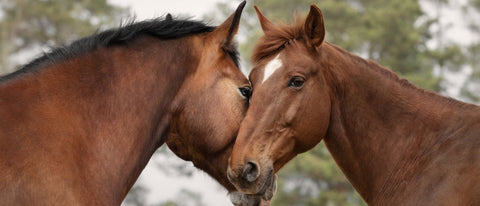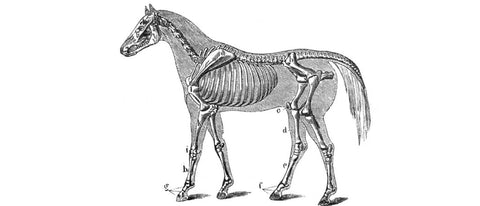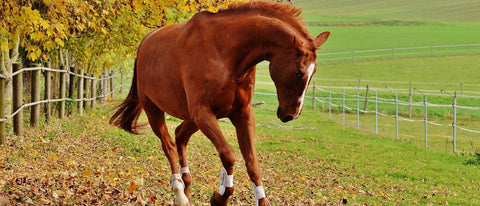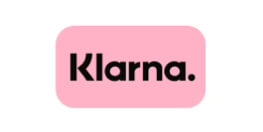
Florian ist aufgewachsen auf einem Bauernhof. Umgeben von Pferden, entdeckte er früh seine Faszination für diese majestätischen Tiere. Inspiriert von seiner reitbegeisterten Mutter, entwickelte er das Nahrungsergänzungmittel - Pferdegold. Seine tiefe Verbundenheit zur Natur und die leidenschaftliche Hingabe zu Pferden trieben ihn an, sein Unternehmen zu gründen.
There are phases in a horse's life where nature literally takes over – a good example is the mare's estrus. This brings a unique dynamic to life with horses as the seasons change.
But what does "in heat" actually mean for horses, and what exactly happens when a mare is in heat? This period of readiness to mate, characterized by hormonal changes, can be challenging for both the mare in heat and us as owners.
Suddenly, the calm animal transforms into a horse in heat, whose behavior can range from affectionate to fussy. But what lies behind these changes in character?
In this guide, we explore the estrus cycle and how hormonal fluctuations influence your horse's behavior and needs. Learn with Pferdegold how to correctly interpret estrus signals and support your horse during this special time.

What does "este" mean? All the information on the definition and the early signs!
The estrus marks a special time in a mare's life when she is ready to mate due to natural hormonal changes.
During this phase, horses in heat display a spectrum of behaviors, from increased affection to physical signals their willingness to mate.
One such sign is the adoption of a special body posture, the so-called “flashing”, in which the mare expresses her openness to mating by raising her tail and other signals.
These forms of expression are essential for horses to communicate with potential partners.
The variety of behavior ranges from visible restlessness to an increased interest in stallions, which underlines the importance of correctly interpreting these signals and responding sensitively to them in order to understand and support the needs of the horse in heat.
Breeding season & cycle rest: This is how the cycle works in horses
A mare's cycle consists of different phases that extend throughout the year and are influenced by various factors.
During the breeding season, which is primarily in spring and summer, mares experience regular estrus phases, which can occur approximately every 21 days.
Outside of this season, during the so-called seasonal anestrus, activity decreases, and mares show fewer or no signs of estrus. This allows for a natural pause in the reproductive cycle.
It is crucial for breeders to understand these cycles in order to optimally plan mating and the welfare of the animals.
These are the different phases at a glance
To better understand the reproductive cycle in mares, it is important to know the three key phases in a mare's cycle: diestrus, estrus, and seasonal anestrus.
-
Diestrus (the inter-estrus): This phase follows directly after estrus and is characterized by a time in which the mare is not receptive to conception.
During this phase, the mare's body prepares for a possible pregnancy or returns to a resting state if no fertilization has occurred.
-
Estrus: This is the phase of mating readiness in which mares are ready to conceive. It can be recognized by certain behaviors, such as increased attention toward stallions. The duration and intensity of this phase can vary greatly from individual to individual.
- Seasonal anestrus: During this resting phase, usually in winter, mares show no signs of estrus. This pause in the reproductive cycle is important for the organism's recovery and is influenced by external factors such as daylight and temperature.
Insemination of mares in heat: The right time
For successful horse insemination, the timing is crucial , which is closely linked to the horse's cycle.
During estrus, the mare is receptive to conception, which is the optimal phase for equine fertilization.
This period can vary depending on the mare, but typically she is in heat every 21 days.
The foal estrus, a special fertile period in mares shortly after birth, also offers a unique opportunity for breeding.
Precise timing based on a thorough understanding of the cycle increases the chances of conception.

What breeders should definitely consider
Breeders must have a thorough understanding of their mares' cycles and needs to implement successful breeding strategies.
This includes not only choosing the right time for insemination , but also continuously observing and supporting the animals during all phases of estrus.
Properly supporting mares in heat: How to optimally accompany your horse!
Optimal care for mares in heat requires sensitivity and attention.
During this time, breeders should ensure a calm and stress-free environment to promote the mare's well-being. An adapted diet and, if necessary, consultation with a veterinarian can also be helpful.

Perfect for your horse: Pferdegold® supplementary feed!
These specially developed supplements support your horse's diet and provide it with natural nutrients. Made in Germany, grain-free and drug-free, with a 30-day money-back guarantee.
Try it now!Measures against estrus: Strategies and tips for horse owners
To better manage estrus, you as a horse owner can consider the following concrete strategies and tips. These measures will help ensure the mare's well-being and make estrus easier for everyone involved:
-
Regular exercise: Ensures that the mare gets enough exercise to reduce stress and stay healthy.
-
Offer peace and quiet: Create a stress-free environment in which the mare can retreat.
-
Nutritional management: Adapted feeding can help stabilize behavior during estrus.
- Consult a veterinarian: If problems or behavioral abnormalities persist, you should always seek the advice of a veterinarian to rule out health causes or discuss specific treatments.
What you can do if the mare does not come into heat
If a mare isn't showing the expected signs of estrus, it's important to act proactively. A thorough veterinary examination can provide insight into possible health causes.
In addition, adjusting environmental factors, such as optimizing housing and a balanced diet, together with a lighting program that simulates natural light conditions, can help normalize the mare's cycle and promote her fertility.
A light program uses artificial light to mimic longer daylight hours, which stimulates the mare's body to enter the reproductive cycle. Such measures not only support the mare's health and well-being but can also help restart the natural cycle.
Mares in heat: common problems and how to deal with them
Sometimes mares experience problems during estrus that can affect the animal's well-being and the harmony within the herd. Here are a few tried-and-tested tips for common problems.
-
Excessive restlessness: Mares can be restless during estrus. One solution may be more exercise and outdoor time to calm the mare.
-
Aggressive behavior toward other horses: Some mares become more aggressive toward other horses. Spatial separation during the peak of estrus can help.
-
Difficulty concentrating during training: Some mares have difficulty concentrating. Adapted training, which requires patience and understanding, can help.
- Fertility problems: If a mare does not come into heat, a veterinary examination may be necessary to rule out health problems and, if necessary, start a light program.
Conclusion
To make the most of the relationship between you and your mare during estrus, it is crucial to understand and respect your horse's natural cycles and needs.
By creating a supportive environment that addresses both physical and emotional needs, you will promote your mare's well-being and strengthen your bond.
Applying patience, knowledge, and empathy can not only help overcome the challenges of estrus, but also contribute to a more harmonious and healthier herd.
Pferdegold is here to help you provide the best nutritional support for this special time in your mare's life.
FAQ
Up to what age do mares become estrus?
Mares can theoretically be in heat throughout their lives because, unlike humans, they do not experience menopause.
Fertility may decline with age, but the signs of estrus are still evident in many healthy animals even at an advanced age.
This means that breeders and owners should remain vigilant to ensure the well-being and health of their mares, regardless of age.
How long is a mare in heat?
A typical estrus phase, also called oestrus, usually lasts between five and seven days.
When is the heat strongest?
The intensity and frequency of estrus in mares can vary throughout the year, but is typically strongest in spring and early summer.
This seasonal increase is a natural response to the longer days and the associated increase in daylight, which affects the mares' reproductive cycle.
Understanding and adapting to these natural cycles are crucial for successful breeding programs and the management of breeding animals.
What promotes estrus?
Various factors can promote estrus in mares, including optimal housing conditions, a balanced diet and sufficient exercise.
Additional measures, such as the use of light programs, can be used in some cases to stimulate estrus outside the natural season and thus support the fertility of the mares.
Important:
Pferdegold is not a substitute for veterinary diagnosis or treatment. The information contained in this article is for general informational purposes only and is intended to help improve your horse's well-being.Pferdegold products do not treat or cure diseases , but rather support your horse in compensating for nutritional deficiencies through targeted nutrient intake .
However, they are not a substitute for professional advice from a veterinarian or specialist. If your horse has any health problems, we strongly recommend consulting a veterinarian. Pferdegold assumes no liability for decisions made based on the information provided here.

















